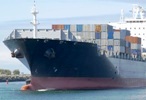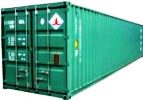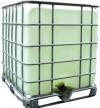| Mubychem Group, established in 1976, is the pioneer manufacturer of Zinc Sulphate or Zinc Sulfate, Pharmaceutical, Fragrance & Flavor chemicals in India. Mubychem Group has several manufacturing facilities spread across Gujarat and Mumbai India and world wide contacts and toll manufacturers. We are exporting globally to countries like USA, Canada, Europe, UAE, South Africa, Tanzania, Kenya, Egypt, Nigeria, Uganda, Turkey, Mexico, Brazil, Chile, Argentina, Dubai etc. |
The participating units have one or more accreditations like FDA - GMP approval; ISO-9001 Certified; "REACH"registered; ISO-22000; Kosher Certified;Halal Certified; HACCP. We offer Pure & IP BP USP FCC Food Grade ACS AR Analytical Reagent Grades of Chemicals | |







Zinc Sulfate Zinc Sulphate Manufacturers, MSDS Sheet
Zinc Sulphate Commercial Grade Manufacturers
Zinc Sulfate BP USP ACS IP FCC Food Grade Manufacturers
Zinc Sulfate
Commercial & Pure Crystals, Zinc Sulphate
Also IP BP Ph. Eur. USP ACS AR LR FCC Food Grades

Zinc Sulfate MSDS Sheet, Zinc Sulphate Material Safety Data Sheet
SECTION 1. PRODUCT IDENTIFICATION
Product Identity: ZINC SULFATE MONOHYDRATE OR ZINC SULPHATE MONOHYDRATE
SECTION 2. COMPOSITION / INFORMATION ON INGREDIENTS
Ingredient: Zinc Sulfate Monohydrate or Zinc Sulphate Monohydrate
CAS Number: 7446-19-7
Weight%: 98%-100%
Trade Names and Synonyms: Zinc Sulfate or Zinc Sulphate, ZnSO4.H20, Hydrated Zinc Sulfate.
SECTION 3. HAZARDS IDENTIFICATION
Emergency Overview: It is colorless, odorless granules. Not flammable or explosive, but will decompose in extreme heat to produce toxic sulphur oxide gas and zinc oxide fume. The granular material solid or dust is relatively non-toxic to humans and poses little immediate hazard to emergency response personnel but is freely soluble in water and can pose a threat to watercourses.Potential Health Effects: It may irritate eyes, skin and respiratory tract. If dusty it may cause breathing difficulty and irritation of mucous membranes. Ingestion may cause strong stomach cramps and diarrhea and may induce spontaneous vomiting. Chronic health hazards include stomach irritation, abdominal cramps and nausea. Zinc Sulphate monohydrate is not considered a carcinogen by OSHA, NTP, IARC, ACGIH or the EU.
Potential Environmental Effects: Zinc Sulfate is highly water soluble and is toxic to fish and other aquatic life. It can also be toxic to plant life and other terrestrial organisms at elevated concentrations in soils.
SECTION 4. FIRST AID MEASURES
Eye Contact: Do not allow victim to rub eye (s). Let the eye (s) water naturally for a few minutes. If particle/dust does not dislodge, flush with lukewarm, gently flowing water for 5 minutes or until particle/dust is removed, while holding eyelid (s) open. If irritation persists, obtain medical attention. DO NOT attempt to manually remove anything stuck to the eye.Skin Contact: Remove contaminated clothing, shoes and leather goods (e.g. watchbands, belts). Quickly and gently blot or brush away excess chemical. Wash gently and thoroughly with lukewarm gently flowing water and non-abrasive soap for 5 minutes. If irritation persists, repeat flushing. Obtain medical advice. Completely decontaminate clothing, shoes and leather goods before reuse or else discard.
Inhalation: If symptoms are experienced, remove source of contamination or move victim to fresh air. Obtain medical advice.
Ingestion: Never give anything by mouth if victim is rapidly losing consciousness, or is unconscious or convulsing. Have victim rinse mouth thoroughly with water. DO NOT INDUCE VOMITING. Have victim drink 2 – 8 oz. (60 – 240 ml) of water. Zinc sulfate is an emetic and may cause vomiting. If vomiting occurs naturally, have victim rinse mouth with water again. Obtain medical advice and bring a copy of this MSDS.
SECTION 5. FIRE FIGHTING MEASURES
Fire and Explosion Hazards: It does not burn or support combustion.
Extinguishing Media: Use any means of extinction appropriate for the surrounding fire conditions such as water spray, carbon dioxide, dry chemical, or foam.
Fire Fighting: Toxic fumes of sulfur dioxide may result from combustion. As with any fire, fire fighters should be fully trained and wear full protective clothing including an approved, self-contained breathing apparatus which supplies a positive air pressure within a full face piece mask. Do not use water directly on material. Do not allow water run-off to enter sewers or watercourses.
Flashpoint and Method: Not Applicable.
Upper and Lower Flammable Limit: Not Applicable.
Auto ignition Temperature: Not Applicable.
SECTION 6. ACCIDENTAL RELEASE MEASURES
Procedures for Cleanup: Stop release if possible to do so safely. Contain spill, isolate hazard area, and deny entry. Sweep up or vacuum. Place contaminated material in suitable, labeled containers for final disposaldisposal authorities.
Personal Precautions: Gloves and coveralls or other protective clothing are recommended for persons responding to an accidental release (see also Section 8). Close-fitting safety goggles may be necessary in some circumstances to prevent eye contact.
Environmental Precautions: This product can pose a threat to the environment. Contamination of soil and water should be prevented. Keep spillage and runoff from storage areas from entering soil, streams or sewers.
SECTION 7. HANDLING AND STORAGE
Store in cool, dry, well-ventilated area away from incompatible substances. Protect from physical damage. It is good practice to keep Zinc Sulphate container closed when not in use. Avoid generating dust and the release of dust into the workplace. Good housekeeping is important to prevent accumulations of dust. Always practice good personal hygiene. Refrain from eating, drinking, or smoking in work areas.
SECTION 8. EXPOSURE CONTROLS / PERSONAL PROTECTION
Protective Clothing: The hazard potential is low. Where there is large scale use of this material and significant potential for worker contact, gloves and long sleeved work clothes or disposable coveralls may be necessary. Eye protection should be worn where dust is generated and there is a potential that eye contact may occur.
Ventilation: Use adequate local or general ventilation where necessary to maintain the concentrations of dust well below the recommended occupational exposure limits for general Particulates, Not Otherwise Specified (PNOS).
Respirators: Where dust or fumes are generated and cannot be controlled to within acceptable levels by engineering means, use appropriate NIOSH-approved respiratory protection equipment (a 42CFR84 Class N, R or P-95 particulate filter cartridge).
SECTION 9. PHYSICAL AND CHEMICAL PROPERTIES
Appearance: It is colorless, odorless granules
Odor: None for Zinc Sulphate
Physical State: Solid
pH: 5.0 @ 10% solution; 4.5 @ saturated solution
Vapor Pressure: Negligible @ 20C
Vapor Density: Not Applicable
Boiling Point/Range: Not Applicable
Freezing/Melting Point/Range: Loses water at 238°C; Decomposes at 680C (1256F)
Specific Gravity: 3.28
Evaporation Rate: Not Applicable for Zinc Sulphate
Coefficient of Water/Oil Distribution: Log p (oct) = -0.07 (estimated)
Odor Threshold: Not Applicable for Zinc Sulfate
Solubility in Water: 53.8 g/100 ml at 20C. 89.5 g/100 ml at 100C
SECTION 10. STABILITY AND REACTIVITY
Stability and Reactivity: Zinc Sulphate is stable and not considered reactive under normal temperatures and pressures. Hazardous polymerization or runaway reactions will not occur.
Incompatibilities: None have been identified to date. Avoid excessive heating that may lead to decomposition of the material.
Hazardous Decomposition Products: High temperature operations such as oxy-acetylene cutting, electric arc welding or severe overheating will generate zinc oxide fume which, on inhalation in sufficient quantity, can produce metal fume fever. Under such conditions, sulfur dioxide will also be generated and can cause respiratory distress.
SECTION 11. TOXICOLOGICAL INFORMATION
General: In the form in which Zinc Sulphate is sold it is relatively non-toxic. The major route of exposure would be through the generation and inhalation of airborne dust and especially the generation of zinc oxide fume through thermal decomposition.
Acute:
Skin/Eye: Zinc Sulfate direct contact may cause local irritation of the eyes or skin but would not cause tissue damage. Eye contact with solutions (>1%) may cause the appearance of white flecks on the lens of the eye. Dust or fume from burning or welding operations may also cause local irritation.
Inhalation: Zinc Sulphate acute inhalation may result in irritation but is not expected to cause significant harmful effects. Symptoms may include discomfort, coughing, tingling sensation, sneezing and/or shortness of breath and wheezing. Extreme heating of Zinc Sulphate monohydrate will generate zinc oxide fume. If inhaled, this fume can result in the condition called metal fume fever. The symptoms of metal fume fever will occur within 3 to 10 hours of exposure, and include immediate dryness and irritation of the throat, tightness of the chest, and coughing which may later be followed by flu-like symptoms of fever, malaise, perspiration, frontal headache, muscle cramps, low back pain, occasionally blurred vision, nausea, and vomiting. The symptoms are temporary and generally disappear, without medical intervention, within 24 to 48 hours of onset. There are no recognized complications, after affects, or chronic affects that result from this condition.
Ingestion: Zinc Sulfate ingestion of large doses can cause anemia and stomach symptoms. It is very astringent, and when ingested in excessive quantities, can irritate the stomach, resulting in abdominal pain, nausea, diarrhea and spontaneous vomiting.
Chronic: In general, zinc is considered to be a low toxicity metal. Zinc is a very important trace element for humans and the body regulates the amount of zinc stored by decreasing absorption and increasing excretion when intake is increased. Industrial experience has not identified any significant chronic effects from zinc sulfate to date. The item is not listed as a carcinogen by the Occupational Safety and Health Administration (OSHA), the National Toxicology Program (NTP), the International Agency for Research on Cancer (IARC), the American Conference of Governmental Industrial Hygienists (ACGIH) or the European Union (EU).
SECTION 12. ECOLOGICAL INFORMATION
Zinc Sulphate has high water solubility and its zinc and manganese contents are directly bio available. The zinc in particular may be toxic to aquatic organisms, especially fish, with water hardness, pH and dissolved organic carbon levels being regulating factors. In terrestrial systems, the mobility of zinc and manganese in soil and their degree of bioaccumulation in organisms is dependent on soil chemical conditions.
SECTION 13. DISPOSAL CONSIDERATIONS
Do not wash the material down drain. Put uncontaminated material back into the process if at all possible. Place contaminated material in suitable, labeled containers for disposal. Dispose of waste material consistent with the requirements of waste disposal authorities.
SECTION 14. TRANSPORT INFORMATION
DOT Classification: Not a DOT controlled material (United States).
Identification: Not applicable.
Special Provisions for Transport: Not applicable.
SECTION 15. REGULATORY INFORMATION
USA Federal and State Regulations:
Pennsylvania RTK: Zinc sulfate monohydrate Massachusetts RTK: Zinc sulfate monohydrate
TSCA 8(b) inventory: Zinc sulfate monohydrate
SARA 313 toxic chemical notification and release reporting: \Zinc sulfate monohydrate
CERCLA: Hazardous substances: Zinc sulfate monohydrate
WHMIS (Canada): Not controlled under WHMIS (Canada)
DSCL (EEC): R36/38- Irritating to eyes and skin.
HMIS (U.S.A.):
Health Hazard: 2
Fire Hazard: 0
Reactivity: 0
Personal Protection: E
National Fire Protection Association (USA):
Health: 2
Flammability: 0
Reactivity: 0
Specific hazard:
Protective Equipment:
Gloves. Lab coat. Dust respirator. Be sure to use an approved/certified respirator or equivalent. Splash goggles.
SECTION 16. OTHER INFORMATION
Disclaimer:
******************************
Our company provides this Zinc Sulfate or Zinc Sulphate MSDS information sheet contained herein in good faith but makes no representation as to its comprehensiveness or accuracy. This Zinc Sulfate or Zinc Sulphate MSDS sheet is intended only as a guide to the appropriate precautionary handling of the material by a properly trained person using this product. Individuals receiving the information must exercise their independent judgment in determining its appropriateness for a particular purpose.
******************************
Zinc Sulphate manufacturers
Zinc Sulfate manufacturers at:
MUBYCHEM GROUP
CHINCHBUNDER, MUMBAI 400009, INDIA
TEL: (OFFICE) 91-22-23774610, 91-22- 23723564. 91-22-23728264
e-mail: anmol@pcmenergy.com

Copyright and Usual Disclaimer is Applicable.
Global or International Zinc Sulphate or Zinc Sulfate Suppliers, Exporters, Importers, Manufacturers
Calcium Phosphate Tribasic MSDS
If I give you “My Word” Nobody can undo it.
If I sign an “Agreement” my Lawyer will undo it
Perfection is made up of small thing but it is not small.
